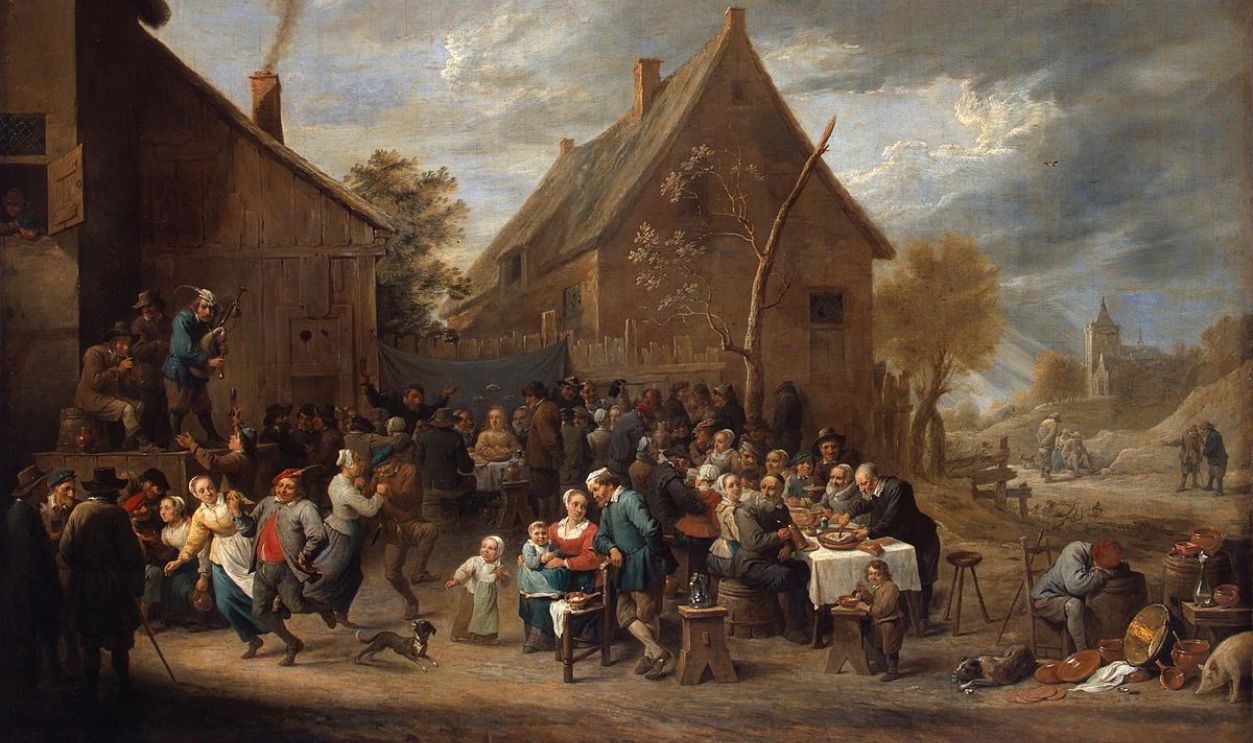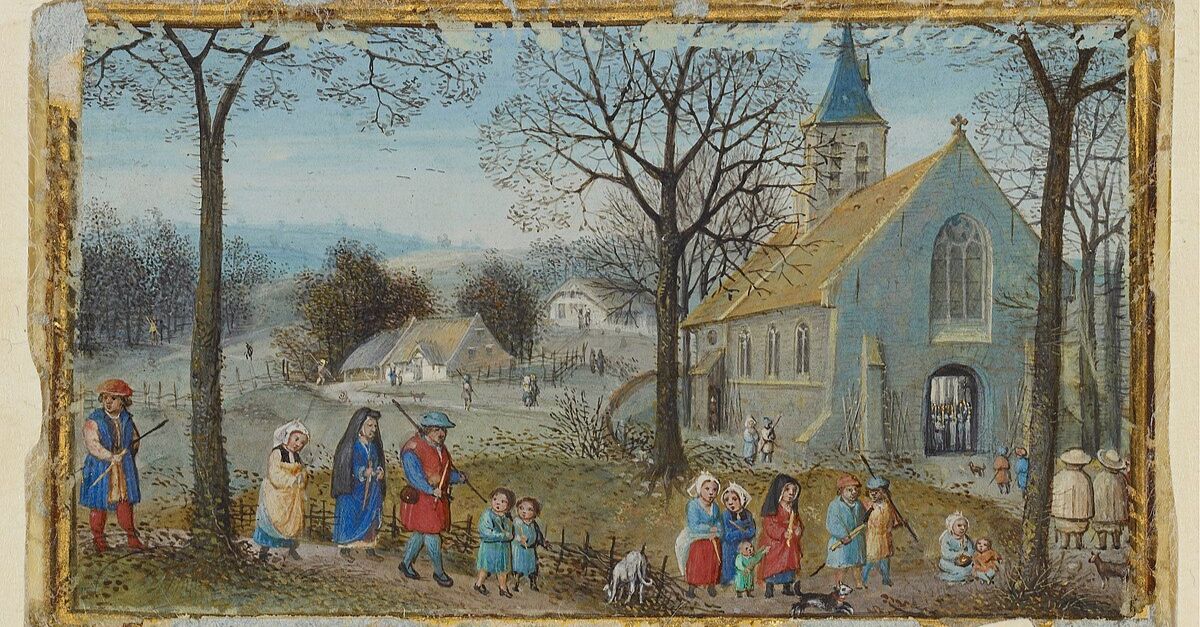How Medieval Peasants Survived: A Glimpse into Their World
Ever feel like your workday is tough? Now, imagine that toil ten or a hundred-fold as the medieval peasants did. Hard labor was the norm, and the occasional disease outbreak was a "bonus." Read on for the hard facts.

Working On The Land
Peasants worked in the fields most of the time. They grew food for the lord and got a tiny bit of land to grow their own. Every day started early, with plowing, planting, or gathering food, depending on the season. Work was tough, but it had to be done.
 Gilles de Rome, CC BY-SA 4.0, Wikimedia commons
Gilles de Rome, CC BY-SA 4.0, Wikimedia commons
Sharing the Fields
Villages in this era used an open-field system, where everyone worked on the same big fields. Since they didn’t own the land, they couldn’t always make the most of it, and many struggled to grow enough to feed their own families.
How Feudalism Grew
During the Middle Ages, no one called it feudalism, but it basically described how people traded land for military service and protection. This is how it went: a landowner could give land to vassals, who would in return give loyalty or anything the owner would need—military service or advice.
 Internet Archive Book Images, Wikimedia commons
Internet Archive Book Images, Wikimedia commons
Lords And Nobles
In medieval times, society was arranged in grouped tiers. At the top were the lords and nobles, who owned land and had a lot of power. They controlled everything, including the people who worked for them. Nobles lived in big castles and ruled over large lands, while others followed their rules.
 Peter Tillemans, Public domain, Wikimedia commons
Peter Tillemans, Public domain, Wikimedia commons
Peasants And Serfs
At the bottom were the peasants and serfs. Most of them worked on land owned by lords. Their lives were hard, with long hours growing food and taking care of animals. They lived in small houses and had few rights tied to the land they worked for.
 Unknown Author, Wikimedia commons
Unknown Author, Wikimedia commons
Daily Life In The Fields
Life in the fields meant long days and hard work. Waking up in the sun, workers toiled from morning until night, planting and picking crops. This hard job offered little rest. On unfortunate days when storms came, all their hard work could be lost in minutes.
 British Library, CC0, Wikimedia commons
British Library, CC0, Wikimedia commons
Rules and Community Support
Many workers paid rent or worked for free to use the land and lived in small homes, often sharing this space with animals. Still, community was very important as neighbors helped each other during busy times, sharing food and stories. Laughter made long days feel a bit easier.
 Johann Ludwig Ernst Morgenstern, Public domain, Wikimedia commons
Johann Ludwig Ernst Morgenstern, Public domain, Wikimedia commons
Early Work in the Fields
Kids started helping in the fields when they were very young. By the time they were seven, many were planting seeds and picking crops. Some still played, but most worked with their families. This early work taught them important skills, turning play into a way to help feed their families.

History's most fascinating stories and darkest secrets, delivered to your inbox daily.
Growing Up Fast
By their twelfth birthday, children had more work to do—boys did tougher jobs, while girls learned to help at home. Each day was a new experience; weather, rules, and all. Peasant life went beyond just toiling, it meant teenages had to skip the plays and jump right into adulthood.
Death Rates
Due to the harsh living conditions, most peasants only lived into their early 30s. Many kids perished young because of sickness, malnutrition, or accidents. Doctors didn’t have good medicine for them, so most got worse. Babies? Most never lived to celebrate their first birthdays.
 Erik Werenskiold, Public domain, Wikimedia commons
Erik Werenskiold, Public domain, Wikimedia commons
Birth Rates
Even with many people dying young, families had a lot of kids, making the birth rate high. But can you really blame them? The peasant hustle needed many hands to help on farms. Also, in a dark way, parents knew that not all their children would grow up, so they continued to procreate.
 Sergei Prokudin-Gorskii, Public domain, Wikimedia commons
Sergei Prokudin-Gorskii, Public domain, Wikimedia commons
Church Taxes
As if the farms were not hard enough, peasants also had to give some of what they grew to the church as tithe. This was usually 10% of their crops or goods. Many families paid with food, seeds, or tools. This tax made the church rich while farmers worked hard to get by.
 Hegodis, CC BY-SA 4.0, Wikimedia commons
Hegodis, CC BY-SA 4.0, Wikimedia commons
No Tax Evading
If you were a peasant, then you couldn’t dare evade taxes. Why? The king kept track of everyone’s taxes in a big book—the Domesday Book. Skipping payment was very risky, possibly leading to execution. The church used this money to build big barns to store all the things it collected.
 Giuseppe Palizzi, Public domain, Wikimedia commons
Giuseppe Palizzi, Public domain, Wikimedia commons
Peasant Homes
A typical peasant home in medieval England was small and plain. Most had one or two rooms for people and animals. A fire burned in the middle for cooking and keeping the family warm. Some bigger homes had separate places for baking or storing food.
 Unknown Author, Wikimedia commons
Unknown Author, Wikimedia commons
Life Inside The Home
Inside, kitchens were simple. People cooked over the fire using pots and basic tools. Thankfully, the peasants were resourceful, as even the tiny homes had pots, pans, and clothes for everyday use. Families often made their own ale to drink. Life was hard, but their homes were warm.
 Johann Andreas Herrleins, Wikimedia commons
Johann Andreas Herrleins, Wikimedia commons
What They Ate
Meals often had soups made with meat like beef and lamb, along with vegetables like cabbage and leeks. They also ate soft cheeses and some fruits and vegetables. Families cooked with what they grew, making wholesome, yummy meals with what they had.
 Gilles de Rome, CC BY-SA 4.0, Wikimedia commons
Gilles de Rome, CC BY-SA 4.0, Wikimedia commons
Food And Drink Differences
Food and drink were important to peasants. While rich people drank fancy wine, peasants made beer at home! They liked to eat berries and fruits in summer. Sharing drinks with friends was a fun way to celebrate. Even with hard lives, peasants knew how to enjoy life.
 Pieter Brueghel the Elder, Public domain, Wikimedia commons
Pieter Brueghel the Elder, Public domain, Wikimedia commons
Cooking Methods
Cooking happened over a fire in pots. They used different ways to cook their food—open-fire cooking, hearth baking, boiling, roasting, frying, smoking, and salting. Nothing went to waste; even leftovers were used. Simple meals gave families the energy to work hard each day.
 Matson Collection, Public domain, Wikimedia commons
Matson Collection, Public domain, Wikimedia commons
Clothing Of The Working Class
Back then, everyday outfits were simple. Tunics made from wool were the main clothes for men, women, and kids and most of these outfits were long and sometimes had side cuts to help move better. Pouches or small bags tied around the waist were also a must have.
Protective Garments
When working, peasants tried as much as possible to keep their clothes clean, so they wore aprons. Women would always wear long aprons, and men wore them for messy jobs like butchering animals. Another common item was hats and hoods.
Beliefs And Church Control
Peasants in medieval times believed a lot in religion where they mixed old ideas, like fairies and spirits, with Christian beliefs to get by. Priests taught strict rules, but many peasants kept using their old customs, like making charms for good luck.
 Unknown Author, Wikimedia commons
Unknown Author, Wikimedia commons
Fighting For Better Lives
Many poor people in Europe grew more sad as the times passed. And for good reason. Life was hard, with not much money, food, medication, and high taxes. When the pressure got too high, it birthed the English Peasants’ Revolt in 1381. People just wanted better lives and rights.
 Jean Froissar, Public domains, Wikimedia commons
Jean Froissar, Public domains, Wikimedia commons
More Than Just Farmers
These revolts were not just about farmers. The Jacquerie in France, from 1356 to 1358, showed that workers from towns and knights also took part. People wanted fairness and wanted to end the hardship that had gripped them. This revolt was not only about farming; it was about fair treatment.
 E. Crété d'après H. Grobet, Public domain, Wikimedia commons
E. Crété d'après H. Grobet, Public domain, Wikimedia commons
They Had Local Healers
Most peasants didn’t see a doctor. They often turned to the wise woman in their village, who knew how to use herbs for healing. Some monks in nearby monasteries also helped. They had their own special knowledge about plants. For many, these local healers were the best chance for getting better.
 Pierart dou Tielt, Public domain, Wikimedia commons
Pierart dou Tielt, Public domain, Wikimedia commons
What Was The Black Death?
The Black Death was a terrible sickness that hit Europe from 1347 to 1351. It spread quickly and made about one out of every three people very sick or killed them. Many towns and villages lost many people. The sickness came from fleas on rats and spread through trade.
 Pierart dou Tielt, Public domain, Wikimedia commons
Pierart dou Tielt, Public domain, Wikimedia commons
Women and Religion
Women in peasant communities were important in both work and faith. The women helped with farming and joined church events. While the church often saw women as weak, peasants respected and appreciated their strength. Some even admired the Virgin Mary, who was a strong figure.
 Unknown Author, Wikimedia commons
Unknown Author, Wikimedia commons
Peasant Women’s Work
Women also worked very hard at home and on farms. They took care of the children, cooked food, and washed clothes while also helping with farm tasks. Many also became merchants selling cheese and ale. Even though they had many rules, their hard work and sacrifice kept families alive.
Additional Women’s Roles in Medieval Times
Despite religion, women also took up important jobs in health care. Many were healers and helped other women during childbirth. Their main medical practice was herbal, and a woman named Hildegard once wrote about using herbs for health, and it helped treat many.
Limited Freedom For All
Both enslaved peasants and even the free had problems moving around. They often had to pay money just to move their things or go places. This made it hard for anyone, even those not tied to land, to find better chances. Such rules kept many stuck, making life harder.
 anonymous (Queen Mary Master), Public domain, Wikimedia commons
anonymous (Queen Mary Master), Public domain, Wikimedia commons
Cruel Punishments And Classicism
Living in these times was so bad that even if you stole food to feed your family, you could get hurt badly; by hurt, I mean losing a hand. Rich people, as always, got better treatment. They just paid their way through everything, while poor people faced big punishments.
 British Library, CC0, Wikimedia commons
British Library, CC0, Wikimedia commons
Who Decides The Punishment?
Judges were church leaders, so one might think they were fair, right? On a typical day, nope. They mostly ruled in favor of the fortune, but sometimes, very rarely, peasants got lucky. Even though the church wanted to help, it often hurt poor peasants more than rich ones.
 Joseph-Nicolas Robert-Fleury, Public domain, Wikimedia commons
Joseph-Nicolas Robert-Fleury, Public domain, Wikimedia commons
Learning Chances For Poor Families
Education was nothing but a dream to make peasant families because not many poor families had schools during medieval times. However, the rich kids went to school, while the peasants had to work. Some lucky peasant boys could learn if their lord allowed it, but many were fined if caught.
 Bibliothèque Municipale in Cambrai, Wikimedia commons
Bibliothèque Municipale in Cambrai, Wikimedia commons
How Peasant Children Learned
In medieval England, most peasant children did not attend formal schools. Instead, they learned practical skills like farming, animal husbandry, and household chores from their families. A few attended monastery or cathedral schools, mainly those destined for religious or administrative roles.
 Percy Anderson,Public Domain, Wikimedia commons
Percy Anderson,Public Domain, Wikimedia commons
Faith And Pilgrimages
When peasants needed help, they might ask a priest for prayer or visit a holy place. Going to shrines, like the one for St. Thomas Becket in Canterbury, was believed to heal diseases like leprosy. In Wales, people went to holy wells, thinking the water could cure them.
 National Library of Wales, CC0, Wikimedia commons
National Library of Wales, CC0, Wikimedia commons
Marriage As A Deal
Back in medieval times, peasants did not marry for love. Marriages were more like business deals between families. A bride brought a dowry, which was money or land promised to the groom’s family. This dowry helped both families. Love was nice, but it wasn’t the main reason to get married.
 Pieter Brueghel the Younger, Public domain, Wikimedia commons
Pieter Brueghel the Younger, Public domain, Wikimedia commons
Getting Married
Poor people usually got married in their twenties. They needed time to save money for a dowry and to be ready to take care of a family. Before getting married, they had to pay a fine to their lord because the bride moved to her husband’s village.
 David Teniers the Younger, Public domain, Wikimedia commons
David Teniers the Younger, Public domain, Wikimedia commons
Wrestling And Fun
Life for peasants wasn’t just work. They had fun, too! Peasants loved to wrestle with friends. They played games like Skittles and enjoyed funny plays with silly jokes. After watching a play, they would go hunting, fishing, or swimming. Spring was the best time, full of tasty fruits and happy moments.
 Gerrit Lundens, Public domain, Wikimedia commons
Gerrit Lundens, Public domain, Wikimedia commons
Funeral Traditions
Funerals would sometimes last days, with serfs lighting candles and saying prayers. Those who helped were paid a little. The church didn’t like things like dancing in graveyards, but people still added their own ways to the funeral. It made it a shared time for everyone.
 Harper's Weekly June 1870, Public domain, Wikimedia commons
Harper's Weekly June 1870, Public domain, Wikimedia commons
Peasant Markets
Remember women who sold ale, here is where they all went to do so; the market. And each market was different. In some, people traded, and in other areas, they focused on making their own stuff. The populations in such markets always fluctuate based on the location.
 Joseph Van Aken, Public domain, Wikimedia commons
Joseph Van Aken, Public domain, Wikimedia commons
Market Changes
The number of markets went up and down over the years. Trade depended on what people needed and what they had to offer. Towns often used markets more than rural areas, which focused on taking care of their own needs. Markets grew in importance depending on the region.
 Rosa Bonheur, Public domain, Wikimedia commons
Rosa Bonheur, Public domain, Wikimedia commons
Peasant Living Coming To An End
Everything has a beginning and an end right? Well, for these peasants living in the tough England Medieval, the end came because of agricultural innovation, economic changes, land enclosures, population growth, and social pressure to end it.
New Opportunities
With fewer peasants left, it was a very good opportunity for those who stayed to ask to be paid more money for their service. Since there were more jobs available, some peasants started to earn more and live better—food, clothing, education, and shelter.
Changes In Power
Eventually, the common people also wanted a say in what was happening. They didn’t like how much power the lords had. Many wanted a king to rule instead of many nobles. This change in thinking helped weaken feudalism, as people wanted more control over their lives.
 Bibliothèque nationale de France, Public domain, Wikimedia commons
Bibliothèque nationale de France, Public domain, Wikimedia commons
End Of Feudal Duties
Around 1793, many serfs stopped paying fees to their landowners, mostly because they were tired of these payments that lasted too long. With the end of these fees, peasants got their own land and no longer had to pay the church. This change was a big step in ending feudalism.





















